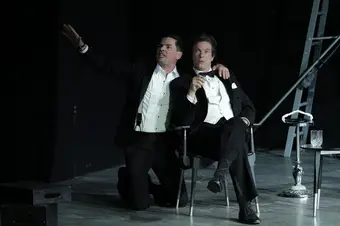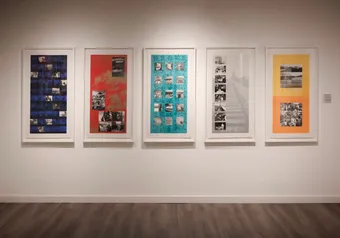On June 15, the production of Much Ado About Nothing had its opening night at Vancouver’s own Bard on the Beach Shakespeare Festival. The play was true to the style of the writer in its plot about miscommunication, improbable love and deception.
Originally set in the sixteenth century at the estate of the governor of Messina, Italy, this adaption put our characters on the estate of a 1959 Italian director, with a visual aesthetic similar to Frederico Fellini’s La Dolce Vita and 8½.
Accordingly, the set and costumes were some of the highlights of the production. For the play’s first act, the costumes, set pieces and props were black, white and grey, emphasizing the cinematic feel of the production.
After love was introduced into the plot, small bits of colour began to appear in the costumes. In the second half, colour became completely present on the stage.
Two scenes stood out in particular as major crowd pleasers. In the first, two characters who are in love have a conversation about how to deal with the latest turn of events. It was not so much the dialogue that made it special but a modern twist on the scene's set up. Both characters begin their conversation and later exit the scene on classic Italian vespas, one black and one pink. This modernization made an otherwise uneventful scene memorable.
Another clever moment of modernization took place when the character Antonio, played by David M. Adams, was meant to sing a short song. In the original script, the 16th century ballad is in English. In this version, it was sung in Italian and sounded like something one might hear strolling down the streets of Florence, complete with added percussion and back up dancers. This light moment was warmly embraced by the audience.
The play’s shortcomings can be traced to its source material.
Yes, in this instance, I am criticizing Shakespeare.
The use of both comedy and tragedy in Much Ado About Nothing has been historically cited as one of the play’s strengths, adding to it great complexity. However, I would argue that the sudden changes in tone and mood made the progression of the story awkward and inconsistent. The audience did not have time to emotionally prepare for such a dramatic and dense turn, and they soon forgot the fun that they were having minutes earlier. While there was some comedy remaining in the second half, it was not as obviously funny as before and the audience seemed unsure whether or not to laugh at certain occasions.
The play’s message about female empowerment was mixed throughout the acts. The first half had the lead explaining why she saw no reason to settle down with a husband, while in the second act a woman was wished dead by her father due to a false claim of her no longer being a virgin. Especially when said shamed woman eagerly takes back the man who only hours before had scornfully rejected her, the messages become inconsistent and hard to process.
Again, I understand that the production team did not have the luxury of simply changing a major plot point of the story. However, the sincerity of the story's conflict is not as relevant for modern audiences as that of plays like Hamlet, Romeo & Juliet and Macbeth.
Much Ado About Nothing will be running until September 23. Tickets are available here.
First online
Share this article








